Written by Ayoub Khouyi
10/10/2023
Design for Additive Manufacturing - Part 1
TL; DR: Unlocking the power of 3D printing with these tips for “Design for Additive Manufacturing” (DfAM)
In this guide, we will be looking at SolidWorks as a CAD software, and PrusaSlicer as a slicing software.
What is DfAM?
The art of fine-tuning 3D designs to optimize the functionality and resolution of 3D printed parts. The implementation of DfAM is based on including manufacturing and assembly knowledge in the design phase. By following the tips in this guide, you will unleash the power of your 3D printing.
Layer orientation
Before diving into some design tips, it is crucial to carefully consider the layer orientation. This decision plays a pivotal role in determining the part's structural performance. The choice of layer orientation should primarily hinge upon the direction of any possible loads that the final part will be subjected to. By aligning the printed layers with the expected loads, you can enhance the printed part's strength and durability. This becomes particularly significant because the cracks in 3D-printed parts often initiate from the interlayer gaps.
This basic bracket analysis demonstrates the connection between the orientation of individual layers and the force exerted on the bracket. When subjecting the bracket to a perpendicular load from the right side, we could easily identify the location of maximum stress, indicated by the yellow colour.

Bracket 3D CAD

Static Study
Therefore, ensuring that the applied load is along the length of the layer lines rather than across them will guarantee that stress is spread equally across several layers rather than a single layer.

Across layers view

Along the length of the layers view
Overhangs
An overhang in 3D printing means a section of the printed part that sticks out horizontally beyond the layer just below it, which leads to printing mid-air. When it comes to printing such overhangs, most 3D printers face challenges when the angle exceeds 45 degrees. This happens because the melted material used in 3D printing needs a solid base to stick to and cool down properly. If the overhang angle is greater than 45 degrees, gravity pulls the extruded filament which will negatively impact the rest of the print.

Sliced overhang test model

Good overhang

Bad overhang
Sometimes, you can avoid overhangs by just reorienting your part in your slicer. However, if reorienting is not eliminating overhangs, especially when you have more than one in different directions, then the next design tips are for you:
Chamfer
A simple automated feature found in most CAD software. It's used to smooth out sharp angles by creating an angled or bevelled edge. Essentially, chamfering reduces the sharpness of an angle, making it more suitable for 3D printing on most printers. In contrast, there is also a similar tool called "Fillet," which serves the same purpose as chamfer but with a different approach. Instead of creating an angled edge, fillet connects two surfaces with a rounded edge. However, fillet is generally less efficient than chamfer. The main reason for this is that the stepped or stair-like effect produced by connecting two surfaces with the fillet tool is less consistent and uniform than if you used chamfer. Consequently, fillet can decrease the effectiveness of supporting overhanging structures during 3D printing.

Supporting an overhang with a Fillet.

Supporting an overhang with a Chamfer.
Splitting the model
When dealing with complex designs that have extensive overhangs, splitting the model into multiple components is a highly effective strategy. This approach allows you to print each part separately, reducing the need for support structures and ensuring that each component is printed optimally flat along the print bed. If you consider using this technique to avoid overhangs in your design, here is how to make the most out of it:
Examine your 3D model and identify natural splitting points where the components can be separated and later assembled. These points are often where parts connect logically or where the geometry allows for disassembly and assembly. The following example illustrates a potential splitting point that can be used to split the model having a challenging overhang.

Sliced bracket utilizing support material

Split bracket for support-free printing
When designing parts that will be assembled after printing, consider including features like alignment pins, slots, interlocking mechanisms, or threaded connections. This ensures that the components fit together precisely, enhancing the overall functionality of the final object.
Bridging
In 3D printing, a "bridge" refers to a part of the printing process where the extruder deposits filament in mid-air between two supported points within the same layer. This technique enables designers to create structures that span open gaps without the necessity of using support material beneath the bridge.
The length of the bridge is a crucial parameter to consider before starting your design. Most printers can print bridges over distances up to 100 mm. However, your first layer may fail beyond 100 mm bridge unless your 3D printer has an efficient cooling fan, and the printing settings are fine-tuned.

60 mm bridge

120 mm bridge
As the structure of the first layer in a bridge is essential for a successful print, avoiding complicated patterns has the potential to increase your chances of printing a solid bridge. If patterns other than straight lines are unavoidable in your design, then you could consider having the base first layer of the bridge as a straight line and then build up any patterns on top of it.
DfAM is more than just a design philosophy; it's a bridge between creativity and manufacturing feasibility. It empowers designers to leverage the unique advantages of 3D printing, resulting in parts that are stronger, more durable, and better suited to their intended purposes.
